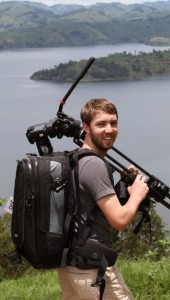by Dustin Jones
I was first introduced to professional video production in 2004 and was fascinated with the quality of the image produced from the cutting edge High Def cameras. At that time, the cameras were what anyone would expect a camera to be – large, heavy (20 to 40+ pounds) and expensive. Of course, videotape was the normal recording platform and each brand required its own kind of tape. If a camera was small and less expensive, the image quality carried those same attributes. This seemed to be a logical way to have things in order, but just over the past 5 years we have seen a change in industry.
Recent advances in technology have allowed cameras to become smaller and less expensive without compromising image quality. Actually, the image quality has improved. We can now pack a backpack with a RED Epic and shoot 4k RAW footage anywhere we want or need to go. Of course this is not the most cost effective way to go but the point is that it can and is being done. Canon also has several products now that are compact and modular that can fit into a backpack and allow for some wonderful image capture at a lower cost. I love the ability to pack everything you need into one or two bags for a full day shoot. This opens up so many possibilities with the way we plan, budget, and execute a production. I am always looking at what tools and accessories other professionals are using to pack more power into one bag.
I have traveled many times with a camera bag and have found some great product combinations. Each time I find myself adding or subtracting, based on the needs of the production, but if I were to head out with no idea what I was shooting, this is the gear I would choose for my backpack: Lowepro Pro Trekker 600 AW or the Vertex 200 AW, Canon 5D Mark 3,Canon 16-35 2.8, Canon 70-200 2.8, Canon 50 mm 1.2, Canon 24mm TS-E, 10 LP batteries, Small HD DP4 EVF, Edelkrone Pocket Rig and Follow Focus, Zoom H4n, Noga 8inch arm with Bogan Mini clamp, 15 in Macbook Pro with retina display, MPRO 536 Tripod with 504 HD Head, Sound Devices 302 portable 3 Channel Field Mixer, Rode NTG-2 Shotgun Mic DSLR Kit. As a director of photography, I am always trying to bring new elements to the traditional frame of view. Just because I have grown up in a different production world does not mean I do not have the highest respect for the way production has been done for years with film. By recognizing that visible light will remain the same, we must expect to capture it differently as the future unfolds.
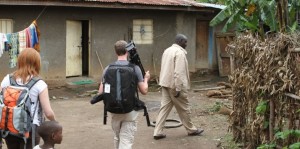 Vertex 200: This is the bag that has been on my back for 3 years, and it has served me well. I can carry 3 lenses, 2 camera bodies, a field monitor, follow focus, 10 batteries, 3 chargers, 20 8GB SD cards, laptop, iPad, filters, audio gear, and a tripod with a fluid head on an airplane. I have taken this pack to Rwanda, Africa loaded to 40lbs without any issues.
Vertex 200: This is the bag that has been on my back for 3 years, and it has served me well. I can carry 3 lenses, 2 camera bodies, a field monitor, follow focus, 10 batteries, 3 chargers, 20 8GB SD cards, laptop, iPad, filters, audio gear, and a tripod with a fluid head on an airplane. I have taken this pack to Rwanda, Africa loaded to 40lbs without any issues.
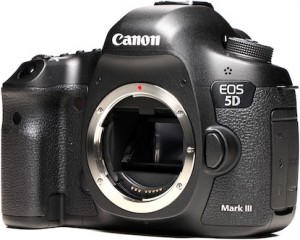 5D: The Canon 5D MK3 is a great camera. If I had to choose one camera to grab on the way out the door this would be it. It is fast to turn on, easy to operate, and does very well in low light. Not to mention it takes great stills. A variety of other features also make it my camera of choice for the unknown. Image source: LensRentals.com
5D: The Canon 5D MK3 is a great camera. If I had to choose one camera to grab on the way out the door this would be it. It is fast to turn on, easy to operate, and does very well in low light. Not to mention it takes great stills. A variety of other features also make it my camera of choice for the unknown. Image source: LensRentals.com
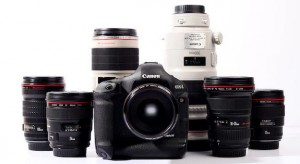 Lenses: This is the hardest thing to choose when it comes to the unknown. I think there is a fear in any pro photographer’s head that we could leave out a lens that would land a cover photo on National Geographic magazine. Still the bag only holds so much. So the lenses for me to run out the door with are not what I want to shoot with all the time but rather what works in most cases. I want to be able to shoot great stills, not just video, so a set of compact primes which don’t have auto focus, or have a zoom range are not in my bag. I have never needed to shoot any wider than 16mm on a 5D (full frame sensor). So, we start with the Canon 16-35mm 2.8. and end with the 70-200mm 2.8 filling the mm gap with Canon glass. Image source: LensRentals.com
Lenses: This is the hardest thing to choose when it comes to the unknown. I think there is a fear in any pro photographer’s head that we could leave out a lens that would land a cover photo on National Geographic magazine. Still the bag only holds so much. So the lenses for me to run out the door with are not what I want to shoot with all the time but rather what works in most cases. I want to be able to shoot great stills, not just video, so a set of compact primes which don’t have auto focus, or have a zoom range are not in my bag. I have never needed to shoot any wider than 16mm on a 5D (full frame sensor). So, we start with the Canon 16-35mm 2.8. and end with the 70-200mm 2.8 filling the mm gap with Canon glass. Image source: LensRentals.com
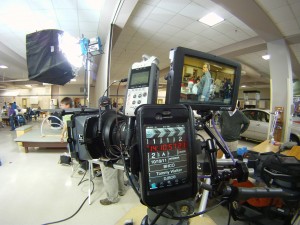 Audio: Many times I have found myself running 2 cameras and audio at the same time, so simplicity is key. The best sound for me comes from a boom mic, not a lav. Plus, I hate dealing with wireless stuff. For a basic interview a boom mic is all you need. The 302 mixer is a great little helper, allowing for duel recoding of the sound. Feeding one channel to the 5D and another to the Zoom, which is also recoding with its own built-in mics, you are covered when it comes to a basic interview.
Audio: Many times I have found myself running 2 cameras and audio at the same time, so simplicity is key. The best sound for me comes from a boom mic, not a lav. Plus, I hate dealing with wireless stuff. For a basic interview a boom mic is all you need. The 302 mixer is a great little helper, allowing for duel recoding of the sound. Feeding one channel to the 5D and another to the Zoom, which is also recoding with its own built-in mics, you are covered when it comes to a basic interview.
